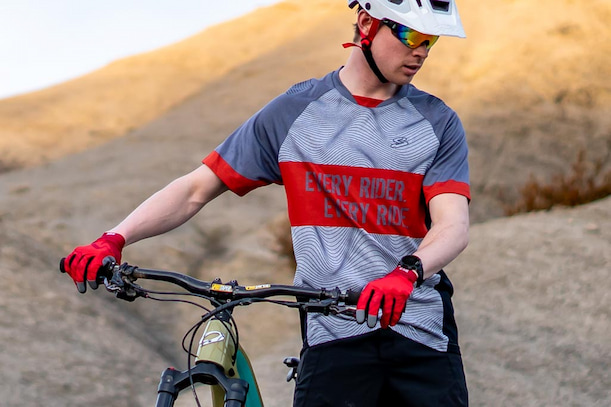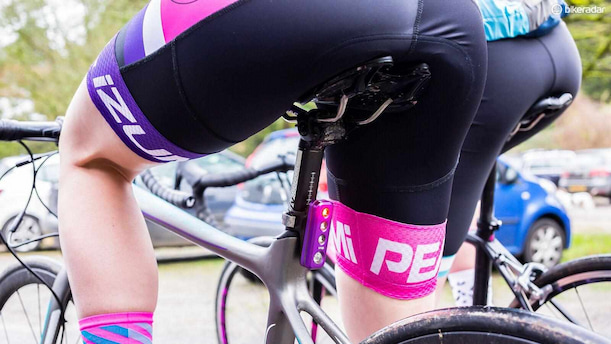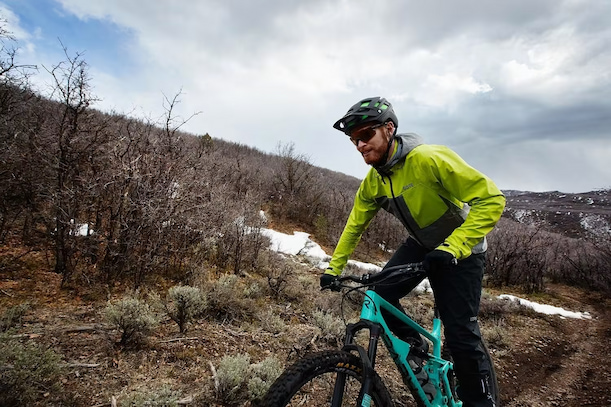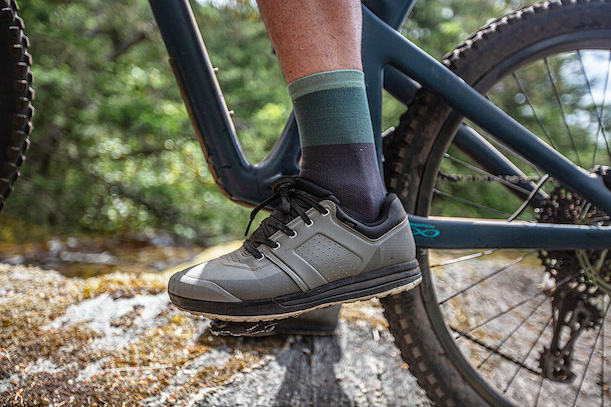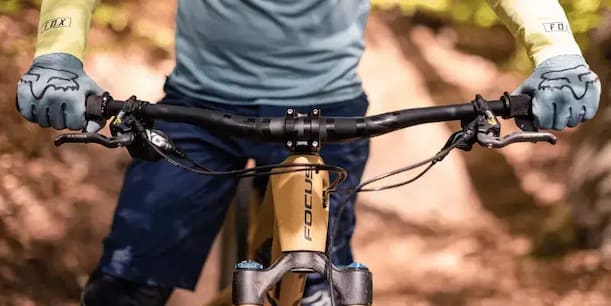MTB Clothing 101: Wardrobe Essentials Every Cyclist Needs
When riding off the beaten path, it’s totally acceptable to wear tight road or loose hiking shorts. But having the appropriate clothing and protection gear will make your ride much more enjoyable!
Are Cycling Clothes Important?
The short answer is yes! Proper mountain bike clothes made of premium fabrics will make you feel comfortable, ride longer, and even more efficient – regardless of your riding level. When compared with conventional pieces, cycling clothing is more aerodynamic because it fits snugly with no extra fabric flapping in the wind, which is crucial when riding in all weather.
Moreover, while cycling, your gear travels along with you. This is especially crucial for legwear as your legs are the part of your body that move the fastest. Therefore, most cycling bottoms are made of Lycra as it has enough built-in stretch to prevent bunching and chafing.
Whether on a regular or electric bike, you will immediately understand why mountain bike clothes aren’t made from cotton if you attempt to climb a hard hill wearing a cotton t-shirt underneath a waterproof jacket. You sweat, and the perspiration soaks into your clothing, making you damp and eventually freezing. For that reason, mountain bike clothing is comprised of materials that allow water to evaporate away from your skin, a process known as “wicking” because it mimics the movement of wax up a candle wick.
Key Pieces
So, whenever and wherever you decide to ride, the following clothing essentials will get you covered any time!
Biking Shorts and Padding
Mountain bike shorts have stretch for easy leg movement and a padded crotch liner to decrease friction and wick away perspiration, just like their counterparts for the road. You can however purchase these separately.
When mountain biking, aerodynamics is rarely an issue, therefore you can wear baggy shorts, instead. However, if you compete or ride a cross-country bike, you should go with tighter-fitting, aerodynamic shorts. Additionally, some athletes who ride prefer form-fitting shorts because they support their muscles.
Most mountain biking shorts have thick materials and lots of pockets. The more abrasion protection you need, the more length and fabric weight you should consider. For example, shorts used for downhill riding should be longer and thicker than those worn for other riding styles.
Mountain bike shorts may have slightly less integrated padding than road bike shorts because you sit more upright and alternate between standing and sitting while riding. Usually their liners are detachable, allowing you to purchase bike underwear and padded liner shorts that are sold separately.
Note that you shouldn’t wear non-bike underwear with your liners, regardless of which choice you pick, as you’ll probably have chafing. When opting between integrated or separate bike underpants, choose the ones that best suit your needs and preferences!
Jerseys
Generally speaking, road and mountain bike jerseys are very similar. They are close-fitting but the latter are little looser to effectively wick away sweat. The fit can be even looser for riding styles that are more gravity focused. In addition, longer sleeves offer more protection against branches and brushes.
You won’t need back pockets if you’re going to wear a pack. Otherwise, pockets come in handy for storing items like keys, snacks, a tire repair kit, a phone, and cash. Many cross-country riders search for this feature since a ventilating front zip is convenient to have when you’re pushing the pace or slogging up a steep climb.
MTB Cold-Weather Clothing
Your riding season can be extended earlier into spring and later into the fall with cold-weather gear. Protection from wind and rain is a smart addition to your pack all year long. On the other hand, you can be prepared to go whenever a “cold front” is mentioned in the forecast by adding insulating clothing.
Therefore, a waterproof and breathable jacket is necessary for serious protection. Some cyclists opt for a lightweight shell that fits into a jersey pocket for brief rides in fairly dismal conditions. On chilly days, you can wear bike tights instead of your liner shorts, most of which are padded.
If you plan to ride when the weather becomes gloomy, you’ll also need a pair of waterproof/breathable pants, comparable to bike jackets, arm warmers, leg warmers, and a cap or headband. This makes them versatile layering alternatives as the weather changes throughout your ride.
Biking Shoes
When it comes to shoes and cycling, there are several considerations to take into account when looking for the right fit! The first one is compatibility with the pedal you choose. Therefore, you can purchase shoes that go with platform pedals and eventually with a clipless pedal system by adding a cleat.
Cross-country/trail shoes that are stiff are made for effective pedalling, but they can be challenging to walk in. These shoes typically have superior ventilation than alternatives that resemble softer street shoes.
How much walking you anticipate is another key factor in mountain biking. If you’re a newbie, you’ll be navigating trails and climbing over obstacles more frequently, so grippe rubber outsoles with lugs make these activities easier. Consider shoes with waterproof lining if you plan on riding in cold and damp weather or buy a pair of shoe covers instead.
MTB Protective Must-Haves
Your riding style is the crucial factor when deciding which protective gear to get. For cross-country riding, a helmet that gives ample airflow and coverage comparable to a road helmet is a must.
Trail riders, on the other hand, encounter more technical terrain than cross-country riders. So, instead of looking for a road or cross-country helmet, consider one with more protection and coverage—longer on the sides and back.
Both styles require more minimal padding. Seasoned motorcyclists merely carry knee guards, but novice riders should definitely consider elbow guards. More experienced cyclists will occasionally wait to put on any of their paddings until they are positioned at the top of a lengthy downhill section to stay cooler.
All-Mountain/Enduro riding style frequently involves steep, technical, and fast descents. Therefore, a hamlet with a detachable chin bar is a useful option to look for. You may often ride without the bar but will need to attach it before a significant descent. The pads ought to be longer and thicker.
You should be fully covered if you prefer the Downhill/park style of riding. This necessitates the use of a full-face helmet and, maybe, goggles rather than sunglasses. Pair them with shin guards to complete their protection.
